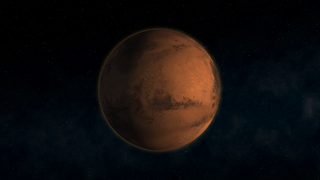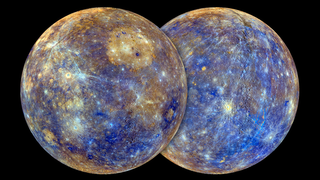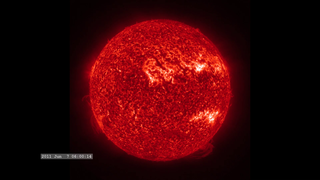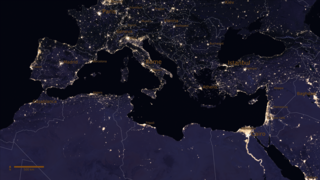Planets and Moons
ID: 30710
Our solar system is made up of a star—the Sun—eight planets, 146 moons, a bunch of comets, asteroids and space rocks, ice, and several dwarf planets, such as Pluto. The eight planets are Mercury, Venus, Earth, Mars, Jupiter, Saturn, Uranus, and Neptune. Mercury is closest to the Sun. Neptune is the farthest.
Our Solar System
Planets, asteroids, and comets orbit our Sun. They travel around our Sun in a flattened circle called an ellipse. It takes the Earth one year to go around the Sun. Mercury goes around the Sun in only 88 days. It takes Pluto, the most famous dwarf planet, 248 years to make one trip around the Sun.
Moons orbit planets. Right now, Jupiter has the most named moons—50. Mercury and Venus don't have any moons. Earth has one. It is the brightest object in our night sky. The Sun, of course, is the brightest object in our daytime sky. It lights up the moon, planets, comets, and asteroids.
Used Elsewhere In
Source Material
For More Information
Credits
Amy Moran (Global Science and Technology, Inc.): Lead Animator
Please give credit for this item to:
NASA/Johns Hopkins University Applied Physics Laboratory/Carnegie Institution of Washington (Mercury), USGS Astrogeology Science Center (Venus, Mars), NASA's Goddard Space Flight Center/Space Telescope Science Institute (Jupiter), NASA/JPL/Space Science Institute (Saturn) and NASA's Goddard Space Flight Center (Earth, Jupiter, Uranus)
NASA/Johns Hopkins University Applied Physics Laboratory/Carnegie Institution of Washington (Mercury), USGS Astrogeology Science Center (Venus, Mars), NASA's Goddard Space Flight Center/Space Telescope Science Institute (Jupiter), NASA/JPL/Space Science Institute (Saturn) and NASA's Goddard Space Flight Center (Earth, Jupiter, Uranus)
Short URL to share this page:
https://svs.gsfc.nasa.gov/30710
Missions:
Cassini-Huygens
Hubble
Magellan
Mars Global Surveyor - MGS
Mars Reconnaissance Orbiter
Mercury
MESSENGER: Mercury, Surface, Space Environment, Geochemistry and Ranging
New Horizons
SDO
Terra
Viking
Voyager
Keywords:
SVS >> HDTV
SVS >> Jupiter
SVS >> Mars
SVS >> Mercury
SVS >> Venus
SVS >> Hyperwall
SVS >> Hubble Space Telescope
SVS >> Solar System
SVS >> Voyager
SVS >> SDO
SVS >> Magellan
SVS >> Neptune
SVS >> Cassini
SVS >> MODIS
NASA Science >> Planets and Moons
SVS >> Saturn
SVS >> MESSENGER
SVS >> Uranus
SVS >> New Horizons
SVS >> Pluto
SVS >> Mars Reconnaissance Orbiter
https://svs.gsfc.nasa.gov/30710
Missions:
Cassini-Huygens
Hubble
Magellan
Mars Global Surveyor - MGS
Mars Reconnaissance Orbiter
Mercury
MESSENGER: Mercury, Surface, Space Environment, Geochemistry and Ranging
New Horizons
SDO
Terra
Viking
Voyager
Keywords:
SVS >> HDTV
SVS >> Jupiter
SVS >> Mars
SVS >> Mercury
SVS >> Venus
SVS >> Hyperwall
SVS >> Hubble Space Telescope
SVS >> Solar System
SVS >> Voyager
SVS >> SDO
SVS >> Magellan
SVS >> Neptune
SVS >> Cassini
SVS >> MODIS
NASA Science >> Planets and Moons
SVS >> Saturn
SVS >> MESSENGER
SVS >> Uranus
SVS >> New Horizons
SVS >> Pluto
SVS >> Mars Reconnaissance Orbiter















